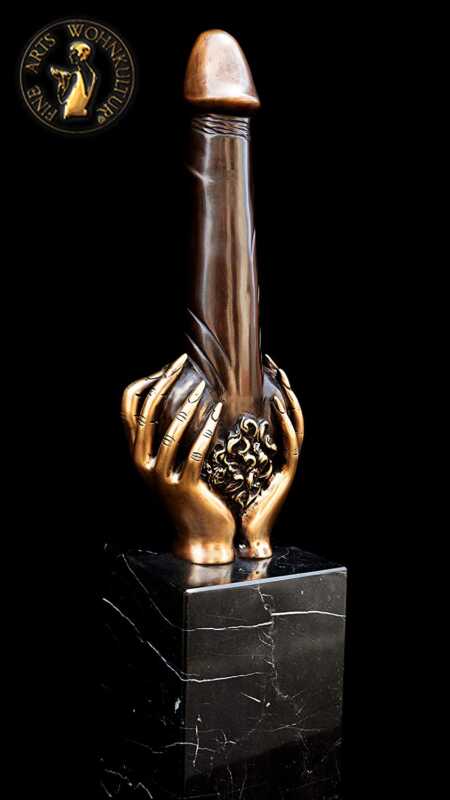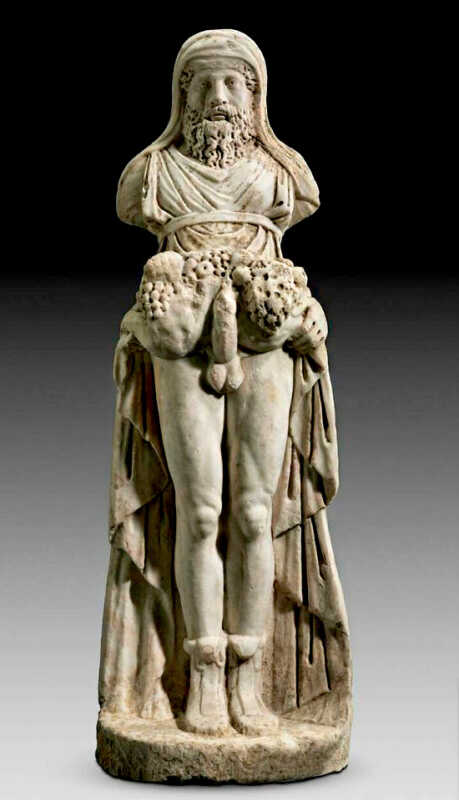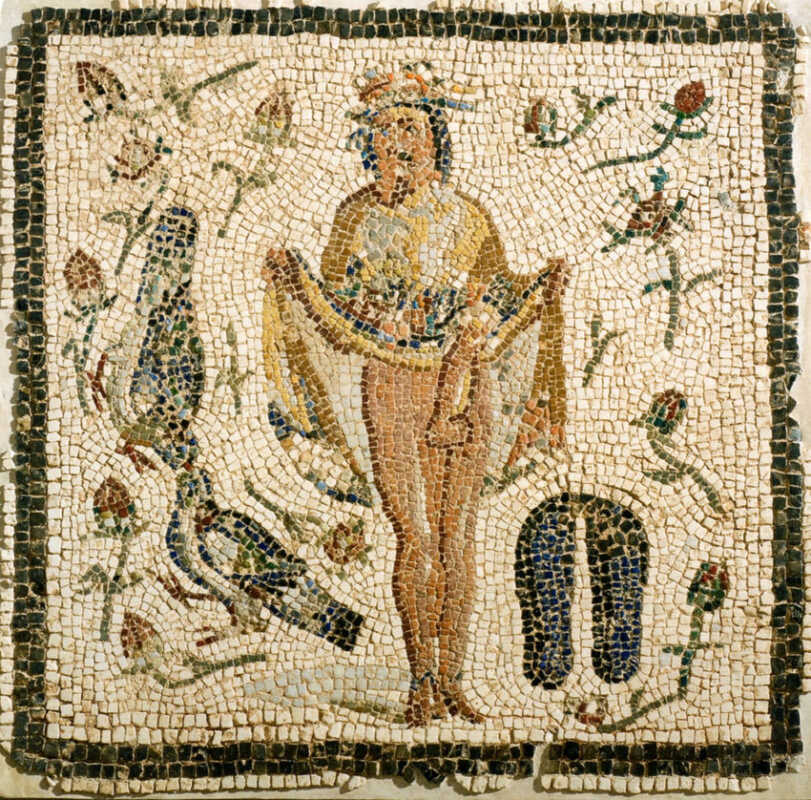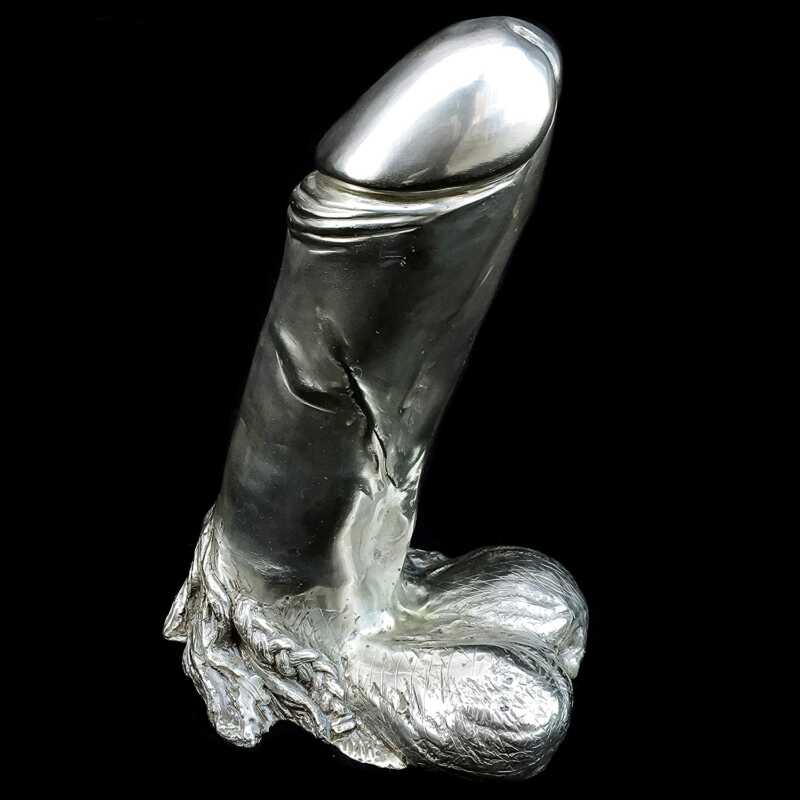Who was the Greek God Priapus?
Priapus is a character from Greek mythology, son of Dionysus and Aphrodite, for others of Aphrodite and Hermes, or Ares, or Adonis or Zeus. Hera, jealous of her husband, retaliated by giving the boy a grotesque appearance and a huge phallus.

The cult of Priapus dates back to the time of Alexander the Great, coming from the Hellespont or Propontis, a symbol of the masculine sexual force and the fertility of nature. He was expelled from Olympus because he was irrepressible. In fact, when he was drunk he tried to rape the goddess Vesta. Even the donkey, symbol of lust, brayed against him to make him escape.
There were several abuses with the Goddesses, from Hephaestus who tried to rape Athena, Pluto who succeeded with Persephone, Zeus in Metis, etc. Priapus represented the wild, instinctive eros, that which the rational mind had found so difficult to master, not only as indiscriminate sex, but also as the freedom to perceive one’s own feelings. The feeling towards women was a strongly repressed instinct. both in Greece and in Rome, and especially in the republican era.
Let us not forget that even the wise Aristotle maintained that the generative principle resided exclusively in man. According to him, women were sterile, they received the male seed but did not participate in fertilization.

What were the Priapus festivities like in ancient Greece?
The Priapus festivities, known as the Priapeia, were celebratory events dedicated to the worship of Priapus in ancient Greece. Priapus was a fertility deity associated with gardens, livestock, and male virility. The exact details of the Priapus festivities vary based on regional and local customs, but they generally involved rituals and activities aimed at invoking the blessings of Priapus for fertility and abundance.
During the Priapus festivities, participants would gather in gardens, orchards, or other outdoor settings, as Priapus was closely associated with agriculture and the growth of plants. The festivities often included the following elements:
Offerings and sacrifices
People would bring offerings of fruits, flowers, wine, and other agricultural products to honor Priapus. These offerings were placed at shrines or Statues dedicated to Priapus, often located in gardens or fields.
Processions and dances
Processions would take place, with participants carrying phallic symbols or statues of Priapus. These processions were accompanied by music, dancing, and singing, creating a festive atmosphere.
Sexual humor and innuendo
The Priapus festivities were known for their lighthearted and humorous nature, often involving sexual jokes and bawdy humor. Phallic symbols, such as representations of Priapus or erect phalluses, were prominently displayed and used as a symbol of fertility and good fortune.
Fertility rituals
The festivities often included rituals aimed at promoting fertility in crops, livestock, and human reproduction. These rituals could involve dances, chants, or symbolic acts performed in the presence of Priapus.
Samsung Store: Galaxy Z Fold4
Feasting and merriment
:The Priapus festivities were occasions for communal feasting and socializing. People would gather to share food and drink, celebrating abundance and fertility.
The Priapus festivities were seen as a way to ensure the prosperity of crops, livestock, and human reproduction through the blessings of Priapus. They provided an opportunity for people to come together, enjoy mirthful celebrations, and express their hopes for a bountiful harvest and successful reproduction.
It’s important to note that the Priapus festivities were not widely documented, and the available information comes from scattered references in ancient texts and art. The exact practices and customs may have varied across different regions and over time.

The Phalophories
The phallophorias were ceremonies in honor of Dionysus in which huge wooden phalluses were carried in procession, a symbol of fertility.
A description of this procession can be found in a fragment of a play by Semos of Delos (late 3rd century BC), quoted by Athenaeus (Deipnosophistae, XIV, 622b):
“Stand back, make room for the god; in fact the god wills
pass through you erect and swollen.”
ἀνάγετ᾽, εὐρυχωρίαν ποιεῖτε τῷ θεῷ• θέλει γὰρ
[ὁ θεὸς] ὀρθὸς ἐσφυδωμένος
διὰ μέσου βαδίζειν.

In the image, detail of the crater by the Painter of Pan (5th century BC), Altes Museum, Berlin.
The Phalophories and the donkeys
The donkey, because of the importance it had in peasant life, and because of the analogy of its immeasurable limbs, was an important animal. The myth tells that Priapus stalked the sleeping nymph Lotis, but the braying of a donkey woke the nymph, preventing her from mating. It was difficult for the nymph to have such a heavy sleeper like her not to notice the embrace.
But the myth claims that God, in revenge, demanded the annual sacrifice of a donkey. In reality, the sacrificed animal represented an aspect of divinity itself in earlier times. In short, he was a very proud god of his sex:

Priapus and the Sexual Instinct
Priapus is the distorted instinct of male power: the overestimation of the phallus. In this party called Phalophories, the cult was reconnected with the Dionysian rites and orgies, which were intoxications of nature, not of sex, or not in the power of sex, but as an expression of nature, therefore an impersonal power. The fact that the God was so ugly and deformed reduced the sacred side, returning it to the earthly level.
His cult was associated with the agricultural world and the protection of flocks, fish, bees and orchards. In fact, phallic-shaped memorial stones were often used to delineate agricultural land. The tradition continued despite Christianity. Even today we find phallic stones in Italy, in the countryside of Sardinia, Puglia and Basilicata or in the inland areas of Spain, Greece and Macedonia.
Priapus protector of gardens and to scare away thieves
Beloved by women as a promoter of fertility, the god was later exiled from Lampsasco, his hometown, at the behest of jealous husbands. The gods intervened, leaving the men of the city impotent, so Priapus was remembered and venerated as the god of gardens, to scare away thieves and the evil eye, and promote the fertility of the garden.
How were the festivities of Priapus in the Roman Empire?
Priapus festivities were also celebrated in ancient Rome, where Priapus was considered a god of fertility and sexuality. Although the Roman festivals may have had some similarities to the Greek celebrations, few detailed records exist of Priapus’s specific festivals in Rome.
However, here are some general aspects related to the festivities of Priapus in ancient Rome:
The Lupercales
One of the Roman festivities related to fertility and sexuality is the celebration of the Lupercalia, which took place every year on February 15. During these festivities, young priests called luperci would walk the streets of Rome, naked or semi-naked, whipping people with leather thongs to purify and purge the city of evil spirits and promote fertility. Although not directly related to Priapus, there may have been similar elements to these festivities and a symbolic connection to fertility.
Statues and cult of Priapus
In Rome, statues were erected and altars were set up in honor of Priapus. These depictions of the god featured Priapus with prominent phallic attributes, as he was seen as a symbol of virility and fertility. Rituals and offerings are believed to have been performed at these places of worship at different times of the year to invoke Priapus’ blessing and protection.
artistic and literary representations
The figure of Priapus was also the object of artistic and literary representations in ancient Rome. Numerous images and statues of Priapus were found in different contexts and at various Roman archaeological sites. Additionally, Roman poets and writers mentioned Priapus in their works, often referencing his phallic aspect and his association with fertility
How was the cult of Priapus in ancient Pompeii?
Priapus, as a deity of fertility and sexuality, was also worshiped in the ancient Roman city of Pompeii, which was destroyed and buried by the eruption of Mount Vesuvius in AD 79. Various depictions of Priapus have been found in Pompeii, suggesting that he was revered in the city. Here are some references to Priapus in Pompeii:
Statues and frescoes:Statues and frescoes depicting Priapus were discovered in Pompeii. These depictions showed Priapus as a male figure with prominent phallic attributes and a smiling expression. Priapus statues were often found in gardens and areas dedicated to fertility.
Inscriptions and Graffiti: Inscriptions and graffiti have been found on the walls of Pompeii that mention Priapus. These inscriptions were often related to fertility, protection, and good luck. Some of these inscriptions were found in private homes, suggesting that Priapus was also worshiped in the domestic sphere.
Amulets and votive objects: Amulets and votive objects related to Priapus have been discovered in Pompeii. These objects, such as small phallus-shaped statues or amulets, were used as symbols of protection and fertility.





